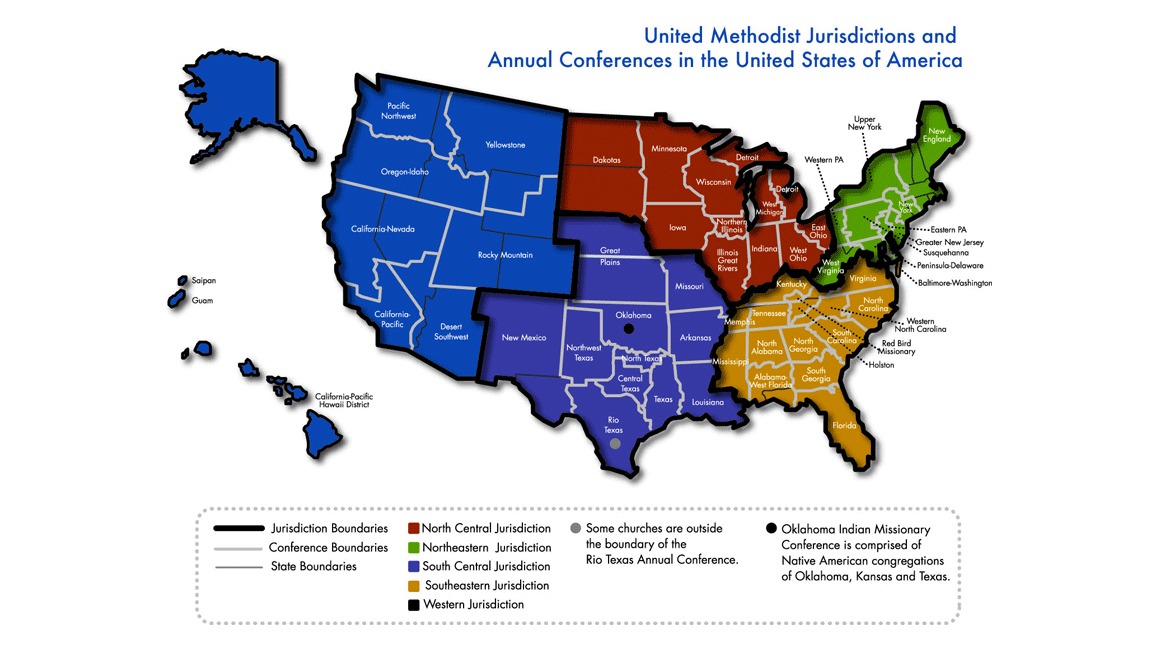Annual Conference, Annual Conference or Annual Conference?
Methodists have three different meanings for the term
When you hear the term “annual conference,” it could be referring to any one of three things. The annual conference is a regional body, an organizational unit and a yearly meeting.
How did this come to be? It’s hard to trace, says John Dillard of the NTC Commission on Archives and History. He speculates it may have arisen in America after the Revolutionary War and the break with the Anglican Church.
Many annual conferences — meaning the yearly meetings in this case — happen in the U.S. in May and June.
Definition 1: Regional Body
The annual (sometimes referred to as regional) conference is described by the church’s Constitution and (other parts of the) Book of Discipline as the “basic unit” of the church.
In the United States, an annual conference may cover an entire state, only part of the state, or even parts of two or more states. There are also three missionary conferences in the United States, which rely upon the denomination as a whole for funding.
The United States has 56 annual conferences, supervised by bishops in 46 episcopal areas. There are 75 annual conferences in Africa, Europe and the Philippines, which are supervised by 20 bishops.
Definition 2: Organizational Body
In the U.S., the annual conference has a central office and professional staff that coordinate and conduct ministry and the business of the conference. It likely has a director of connectional ministries, treasurer, directors of program areas (such as camping), communications director and other staff as deemed appropriate for the annual conference and as required by the Book of Discipline. Clergy and laypersons may also serve on conference boards, commissions and committees.
Definition 3: Annual Conference Sessions
Each year an equal number of clergy members and lay members attend their conference’s annual conference session for worship, fellowship and to conduct the business of the conference, which may last 3-5 days. These sessions include reports of past and ongoing work; adoption of future goals, programs and budgets; ordination of clergy members as deacons and elders; and election of delegates to Jurisdictional and General Conferences (every 4 years). The bishop presides over these meetings.
Published: Tuesday, May 30, 2017

